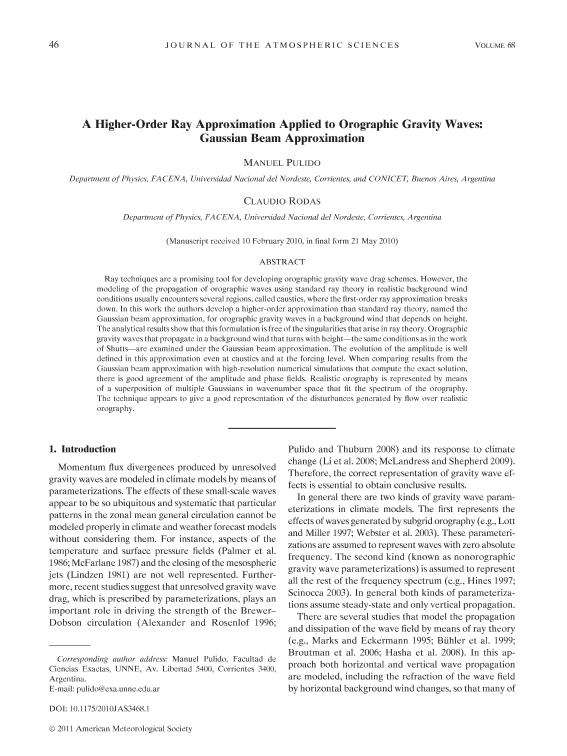Artículo
A higher-order ray approximation applied to orographic gravity waves: Gaussian beam approximation
Fecha de publicación:
01/2011
Editorial:
Amer Meteorological Soc
Revista:
Journal of The Atmospheric Sciences
ISSN:
0022-4928
Idioma:
Inglés
Tipo de recurso:
Artículo publicado
Clasificación temática:
Resumen
Ray techniques are a promising tool for developing orographic gravity wave drag schemes. However, the modeling of the propagation of orographic waves using standard ray theory in realistic background wind conditions usually encounters several regions, called caustics, where the first-order ray approximation breaks down. In this work the authors develop a higher-order approximation than standard ray theory, named the Gaussian beam approximation, for orographic gravity waves in a background wind that depends on height. The analytical results show that this formulation is free of the singularities that arise in ray theory. Orographic gravity waves that propagate in a background wind that turns with height?the same conditions as in the work of Shutts?are examined under the Gaussian beam approximation. The evolution of the amplitude is well defined in this approximation even at caustics and at the forcing level. When comparing results from the Gaussian beam approximation with high-resolution numerical simulations that compute the exact solution, there is good agreement of the amplitude and phase fields. Realistic orography is represented by means of a superposition of multiple Gaussians in wavenumber space that fit the spectrum of the orography. The technique appears to give a good representation of the disturbances generated by flow over realistic orography.
Palabras clave:
GRAVITY WAVES
,
NUMERICAL ANALYSIS/MODELING
,
OROGRAPHIC EFFECTS
,
WIND
Archivos asociados
Licencia
Identificadores
Colecciones
Articulos(IMIT)
Articulos de INST.DE MODELADO E INNOVACION TECNOLOGICA
Articulos de INST.DE MODELADO E INNOVACION TECNOLOGICA
Citación
Pulido, Manuel Arturo; Rodas, Claudio José Francisco; A higher-order ray approximation applied to orographic gravity waves: Gaussian beam approximation; Amer Meteorological Soc; Journal of The Atmospheric Sciences; 68; 1; 1-2011; 46-60
Compartir
Altmétricas




